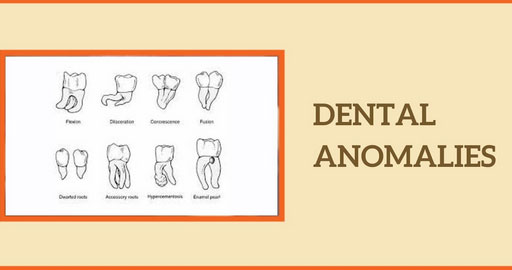
Dental Anomalies – Symptoms, Causes, Treatment
Table of Contents
Your smile is one of your most valuable assets, and maintaining healthy teeth is essential for a confident and vibrant appearance. However, dental anomalies can affect not only the aesthetics but also the functionality of your teeth. In this blog, we’ll explore dental anomalies, their symptoms, causes, and available treatments to help you better understand and address these issues.
What Are Dental Anomalies?
Dental anomalies are variations from the norm in the size, shape, structure, or number of teeth. These anomalies can occur in both baby (primary) and permanent (adult) teeth. They may be congenital, developing during tooth formation, or acquired later in life due to injury or other factors.
Common Dental Anomalies
1. Missing Teeth (Hypodontia)
- Symptoms: Gaps or spaces in your smile, difficulties with chewing or speech.
- Causes: Genetic factors, environmental factors, or medical conditions.
- Treatment: Orthodontic treatment, dental implants, or removable partial dentures.
2. Extra Teeth (Hyperdontia)
- Symptoms: Crowding, misalignment, or pain.
- Causes: Genetic factors, hormonal imbalances, or environmental factors.
- Treatment: Extraction, orthodontic treatment, or monitoring in less severe cases.
3. Abnormally Shaped Teeth
- Symptoms: Abnormal tooth shape, potential discomfort or sensitivity.
- Causes: Genetic factors, nutritional deficiencies, or prenatal factors.
- Treatment: Veneers, crowns, or reshaping procedures.
4. Supernumerary Roots
- Symptoms: May not be noticeable without dental X-rays, but can lead to complications during dental procedures.
- Causes: Genetic predisposition or variations in tooth development.
- Treatment: Careful evaluation by a dentist to plan for potential complications during extractions or root canal treatments.
5. Tooth Fusion
- Symptoms: Large, misshapen teeth that may be difficult to clean.
- Causes: Genetic factors, trauma, or developmental issues.
- Treatment: Orthodontic correction, restoration, or extraction in severe cases.
6. Peg Lateral Incisors
- Symptoms: Small, cone-shaped lateral incisor teeth.
- Causes: Genetic factors.
- Treatment: Veneers, cosmetic dentistry, or crowns for cosmetic enhancement.
7. Anodontia
- Symptoms: Total absence of teeth.
- Causes: Genetic factors or developmental abnormalities.
- Treatment: Comprehensive restorative dentistry, including dental implants or dentures.
Treatment Options
The treatment of dental anomalies depends on the specific condition and its severity. Some anomalies may not require treatment if they don’t cause functional or aesthetic issues. For more problematic cases, here are some common treatment options:
- Orthodontic Treatment: Braces or aligners can help correct misalignment and spacing issues.
- Dental Restorations: Crowns, veneers, and bonding can improve the appearance of misshapen or discolored teeth.
- Extractions: In cases of overcrowding or severe anomalies, extraction may be necessary.
- Dental Implants: For missing teeth, dental implants are a reliable and long-term solution.
- Dentures: Partial or complete dentures can replace multiple missing teeth.
- Root Canal Treatment: Necessary when dental anomalies affect the pulp of a tooth.
Conclusion
Dental anomalies can affect people of all ages and can vary in severity. If you suspect that you have a dental anomaly or are experiencing related symptoms, it’s crucial to consult with a dentist and consult pediatric dentistry for your kids. Early diagnosis and appropriate treatment can help you maintain a healthy, functional, and beautiful smile. Remember that every dental situation is unique, so your dentist will create a tailored treatment plan to address your specific needs. Regular dental check-ups are also vital for the early detection and management of dental anomalies, ensuring that your oral health remains in top shape.
Leave a Reply
Leave a Reply
Explore More Similar Posts
Explore More Blogs


Leave a Reply